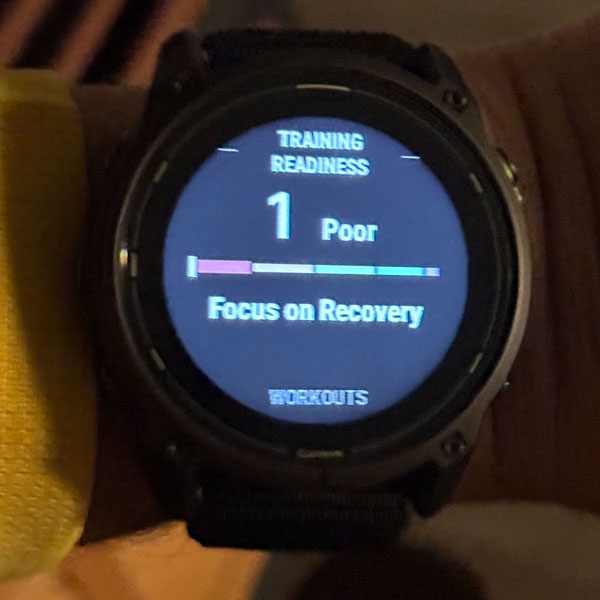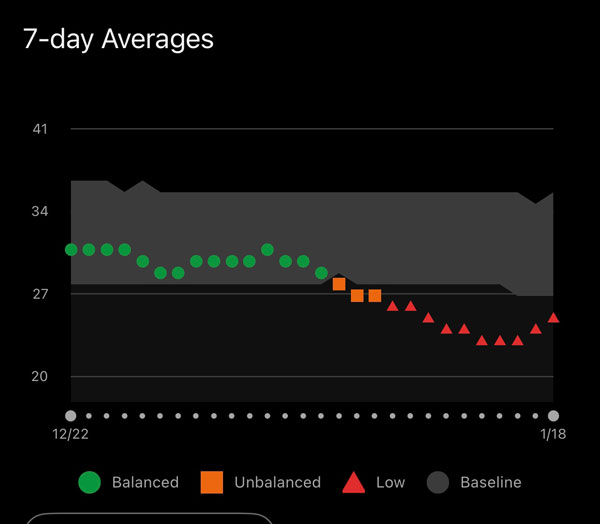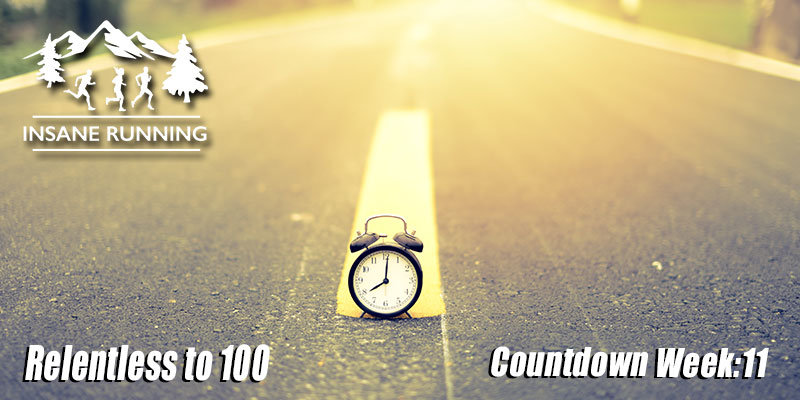Relentless to 100: Week 11
This week is the last recovery week and the prep work for the start of a couple of peak and racing weeks. The main focus is to start gaining on getting the most recovery possible for the upcoming peak and longest back-to-back runs of the training cycle, as well as a rehearsal for the upcoming taper weeks. Hopefully, by now, most of the main work and fuel strategy has been tested, adjusted, and processed during training. This week will focus on the non-running/training run elements that will help you reach the optimal state. This will also serve as a plan for the later taper weeks, providing the necessary recovery to prepare for the 100-mile challenge.
This is part of a series of posts regarding how we prepare, plan, and train to complete the 100 miles Ultramarathon Umstead 100: Relentless to 100. For all the ultrarunning series, here is Relentless to 100, last week’s post, and for additional ideas, follow the link. Training for a 100.

Assessment:
In recovery, there are a few elements to consider. You must use each aspect based on all the learnings from previous events, races, and training sessions, including the past few weeks. Recovery is more than just sitting down, doing nothing, taking a nap, or being on the couch for the rest of the day. On the contrary, there is still so much to do during the recovery phase of the training. There is no time to waste.
Recovery starts as soon as the end or even just before the end of your run: Consider the last quarter or half-mile of your run as a cool down. Even if you like to push the last mile of your runs or end on a solid, high note, make sure you do a slow jog/walk. This will help your heart rate slow down and return to the resting rate. It will help with getting fluids and clean your muscles out of any of the bi-products from the workout. Also, think about any nagging issue that will require some attention during the recovery stage.
What you put in your body counts: What you eat will be key to facilitating better recovery. Going after junk food and not considering the overall nutrient intake as part of your recovery could drastically hamper getting close to peak performance. Consider understanding the ratio of carbs, proteins, and fat that worked best for you and how it’s going to benefit you, including the quality of the food. Research your body type, activity load, and caloric depletion of workouts, and take that information into consideration when planning and maneuvering with your food options. Adjust your food intake accordingly.
Hydration: Hydration strategy is not just for pre-race/run or during a run. Think about how you have felt during a run where you were not well dehydrated and how long it took to come out of it. The same goes for your recovery; if you are dehydrated for most of the day after your workouts and run, your recovery will not be as efficient or as efficient as it could be, getting the recovery to a state that will benefit you for the upcoming days. Weigh yourself before and after runs to get an idea of what good hydration will be needed to get close back to a rested state.
Sleep/Rest: Everyone knows sleep is key and important. You need to plan your sleep time and quality as well, if not better than plan your runs.
Mobility for recovery: Mobility is key. If you stay sitting without any movement, you are going to feel like your muscles are going to get tight, and you might have a longer period of soreness. The key here is very low exertion effort—a walk and light movement that could include stretching and increased mobility. But be careful; Tennis, Pickleball, and other sports that require big exertion and quickness will inhibit your recovery rather than help.
It is all about the details: Stick rolling, Foam roller, Percussion gun, warm bath, cold bath, deep tissue massage, massage in general, compression clothing, vitamins, supplements, Tumeric, Tart Cherry, Recovery Roller, Yoga, Stretching session, others. What other things should you consider?
The answers will help you get ready for the next step, the planning session.
Planning:
Plan ahead what you are going to do during the cooldown. What routine, stretches, and movements are you going to add while your heart rate comes down closer to your resting rate? If no leg stretches, consider the upper body and torso. Running requires and is a whole-body motion sport, not just the legs.
Take a look at what you are eating. Not only pre-run or during a run, but also what it is that you are during the day. If you can have some blood tests done, you can research the few key indicators that might help you identify what is not necessarily working out and or deficiencies you might currently have. There are services that can help you with that analysis, but it can be spendy if you decide to go that route. You might need some multivitamin supplements, specific vitamins, iron, or electrolytes.
Pay close attention to your caloric intake: your workout will increase your caloric allowance, and although you do not want to consistently overdo it or all, always go way below. You want to be conscious of replenishing some of those calories back, especially with good-quality calories. Pay close attention to the quality of the food. Yes, I know that Dunking Donuts looks yummy, but perhaps a granola bar, some almonds, or fruit might be a better choice. It is not forever that you need this, but you are investing in your health and to be able to accomplish something big.
Hydration: Weight yourself before a run to gain a baseline of body weight. Then, weigh once again after your run. Most of the delta or difference between the two is most likely due to water weight loss. Consider a plan to replenish that. It would be the equivalent of 16oz for every pound, on top of what you usually drink during the day. Keep in mind that you will need to spread out the intake throughout the day; it is not going to work to just drink all that in one sitting.
Sleep: If you can, wake up in the morning without an alarm, you are most likely getting some quality sleep time. Your body will determine the optimal time to wake up based on your needed rest. We all know that is not necessarily always possible for many reasons. If you need to set the alarm, try to go to bed a tad earlier; 15 or 30 minutes of gain is better than no minutes at all.
Try to increment your start sleep time until you start waking up without the need for an alarm, as your body will help you determine your natural cycle. If you can’t, make sure you make it the best rest/sleep time you can get. Research resources that will allow you to get better sleep. Make sure you understand your sleep cycle, which, for most, is a variation of 1 hour and 30 minutes. Once you wake up, if you are thinking of hitting that snooze button, you better think again; unless you can put in a complete cycle, you are likely better off getting up. Check the following podcast that covers the topic of sleep.
This week’s actual numbers:
| Week 11 | Mon | Tue | Wed | Thur | Fri | Sat | Sun | Total |
| Plan | Stretches & Rolling | 6 | 5 | Rest | 6 | 14 | 24 | 55 |
| Actual | Walk | 4 | Walk | Travel | 0 | 14 | 0 | 18 |
Next Week Plan:
| Week 10 | Mon | Tue | Wed | Thur | Fri | Sat | Sun | Total |
| Plan | Stretches & Rolling | 6 | 5 | 6 | Rest | 16 | 28 | 61 |







